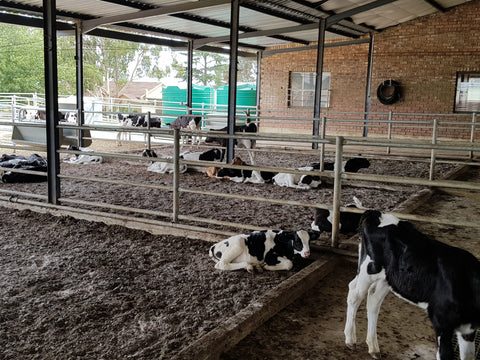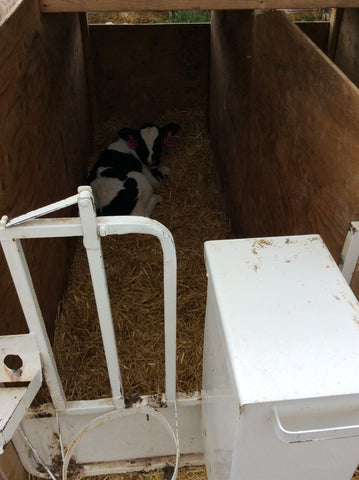
Calf Housing Around the World
There are many different types of calf housing, from plastic to wood and prefabricated to homemade. The key is to select housing that suits your environment, is easy to clean, is comfortable for the calf, and is labor efficient.
Here are some housing examples from around the world.
Oregon, USA
*Individual housing allows you to observe the calf on an individual basis. You know how much each one eats, drinks, and poops.
*Analyzing poop is a big part of keeping calves healthy!
*Individually housed calves receive the care they need on an individual basis.
-example: We lock our young jersey calves in the hutch at night with an empty feed tote so the don't lay out in the cold all night long and get chilled.
*Calves have room to exercise and build strength.


*Photo courtesy of Mary Chamberlain - Dairylain Dairy
South Africa - Covered Pens
*Individual pens are protected from the elements, but still have plenty of air flow.
*Pens are placed to catch the morning and evening sunlight.


*Group pens are also popular.
*Calves are fed with a milk bar or auto feeder


*Photos courtesy of James Kent - NutriBasics
Wisconsin, USA - Negative Pressure Tube
*Highly efficient, and less physically demanding. We can feed, rinse, hang buckets, and clean up in less than one hour 200 calves.
*All indoors, animals are protected from the harsh elements of Wisconsin.
*Ventilation is nearly hands free and highly efficient.
*Heated barn makes it comfortable for everyone in the winter.
*Group housing allows calves to socialize and makes the transition period much less stressful for the calves.
*Tribar flooring means no bedding in the baby barns. Decreases labor and dust/allergens.


*Photos courtesy of Brooke Vanderloop - AVA Group Inc.
Tasmania - Pasture Based Group Pens
*Sheds can be used for hay after the calves are weaned.
*Once all the calves are drinking well it only takes 3 people 1.5 hours to feed all 450 calves.
*Jersey's need to be kept warm and dry to grow well.


*Photos courtesy of Farmer Phil
United Kingdom- Auto Feeder Barn
*We transitioned to auto feeders out of circumstance and time limitations.
*Calves get 3 consistent feedings per day at the right temperature and concentration.
*Calves have the freedom to move around which helps joint development and provides social interaction.


*Photos courtesy of Andy Parsons
"California" Style Hutches
*Individual housing allows individual care
*Easy to reach and handle the calf
*Backs removable for more airflow
*Can be put up on slats to help keep the calf clean.


Idaho, USA - Auto Feeder Hoop Barn
*Labor efficient
*Data provided for how much and when calves come to eat.
*Social interaction
*Protected from the elements



*Photos courtesy of P Bar S Dairy
Written by: Mariah Gull, M.S.
